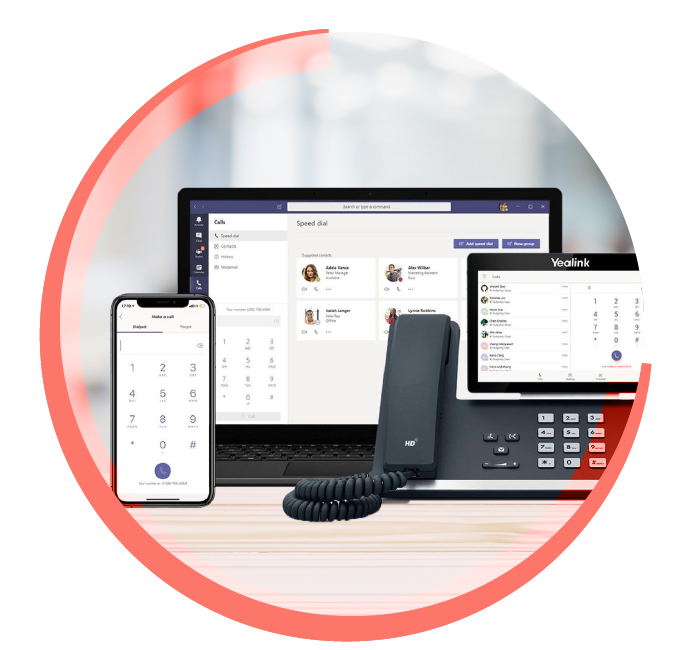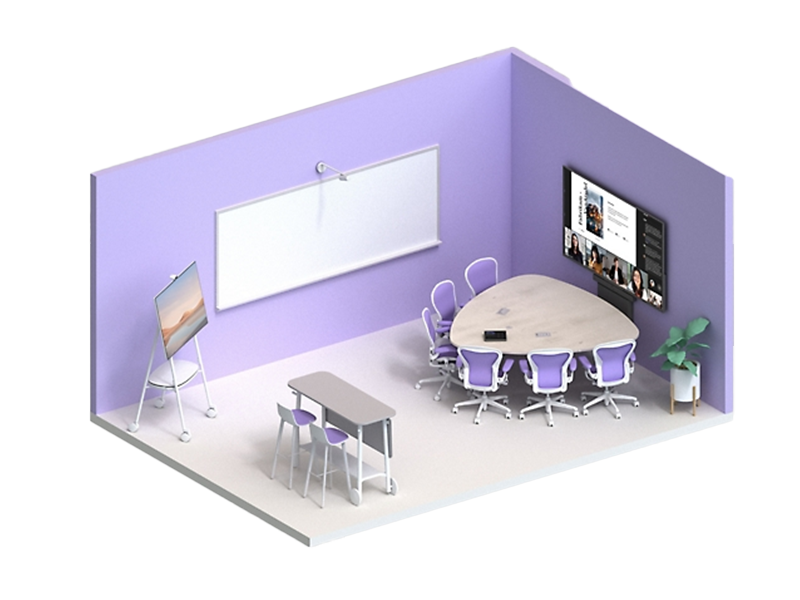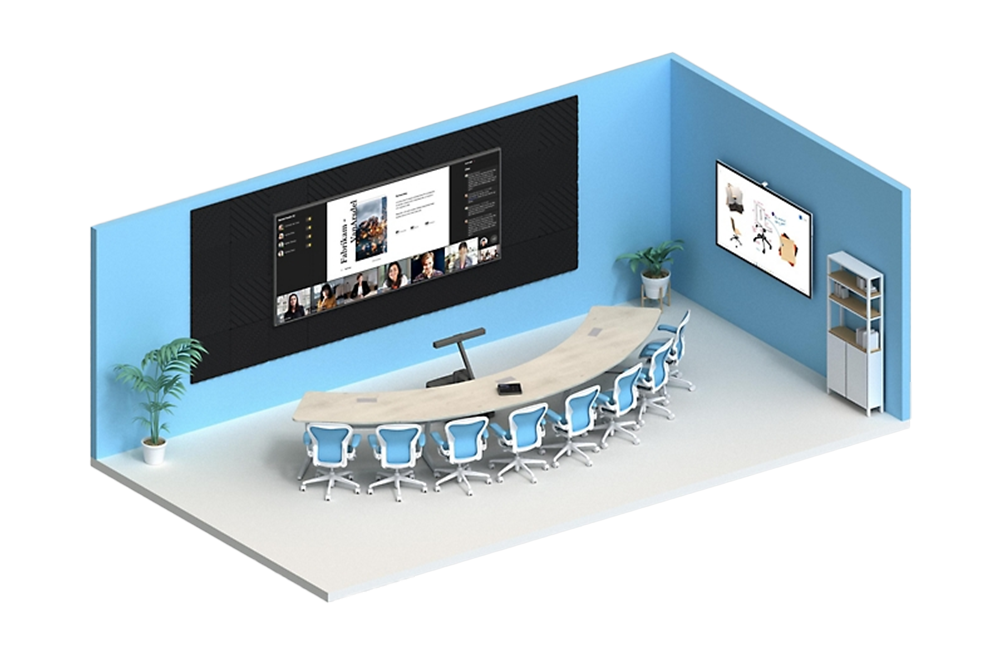Teams Phone
& Teams Rooms
It's Time To Modernize Communications

Does your organization have a Toshiba, NEC, Mitel, ShoreTel, Cisco, Nortel, Panasonic, or Avaya Phone System?
Now is the time to migrate to the industry-leading VOIP / Cloud phone system for business!
Benefit from the simplicity and freedom of no longer being tied to traditional phone lines and dated hardware platforms.
Key Benefits of Microsoft 365
Teams Phone
Keep Your Existing
Phone Numbers
(Local and Toll-Free)
No Server Hardware or Appliances to Install
and Maintain
Mobile Device App
for Apple and
Android Devices
Phone Sets
Not Required
(can use
application on PC)
Wide Range of Vendors
that Make Compatible
Devices (Phone Sets, Boardrooms, Paging, etc.)
One Integrated App for Collaboration / Online Meetings / Voice with Deep Microsoft 365 Integration (Outlook and Teams)
Teams Phone System
Features in Detail
Cloud auto attendants
Lets you create a menu system that enables external and internal callers to locate and place or transfer calls to company users or departments in your organization.
Note that users do not need to be voice-enabled to receive calls from the auto attendant dial by name, dial by number directory search. Users do need to be voice-enabled to receive calls from the auto attendant menu options.
Cloud call queues
Lets you configure how call queues are managed for your organization: for example, set up greetings and music on hold, search for the next available call agent to handle the call, and so on.
Note that users do need to be voice-enabled to receive calls from a call queue.
Music on hold
Plays default music defined by the service or custom music uploaded by the tenant administrator when an external call from the Public Switched Telephone Network (PSTN) is placed on hold. This feature works for one-to-one PSTN-to-Teams calls in addition to calls made to a call queue. This feature provides on-hold notification parity with other platforms.
Call answer/initiate (by name and number)
Lets users answer inbound calls with a touch and place outbound calls either by dialing the full phone number or by clicking a name in the client.
Call forwarding options and simultaneous ring
Lets users set up forwarding rules so calls can go with them anywhere, or calls can be forwarded to colleagues or to voicemail.
Group call pickup and forward to group
Transfer a call and consultative transfer
Lets users transfer calls to another person. Or, if they need to leave their office but want to continue the conversation, they can transfer the calls from their PC or IP phone to their cell phone.
Transfer to voicemail mid call
Lets users transfer to voicemail during a call.
Call park and retrieve
Lets users place a call on hold in the Teams service in the cloud. When a call is parked, the service generates a unique code for call retrieval. The user who parked the call or someone else can then use that code and a supported app or device to retrieve the call.
Call phone number from search
Lets users place a call from the search box by using the /call command and specifying a name or a number.
Caller ID
Calls from inside the company display a detailed caller ID that pulls information from the corporate directory, showing picture ID and job title instead of just a phone number. For calls from external phone numbers, the caller ID as provided by the phone service provider is displayed. If the external phone numbers are secondary numbers in the corporate directory, then the information from the corporate directory will be displayed.
Device switching
Lets users play a call or meeting on another HID device that is connected to Teams; for example, switching from their PC speakers to a headset.
Presence-based call routing
Controls inbound communications with presence, enabling the user to block all incoming communication except from those specifically indicated.
Integrated dial pad
Lets users dial by name or by number anywhere in the search bar and in the dial pad, speeding up the process of making outbound calls
Federated calling
Lets users securely connect, communicate, and collaborate with users in federated tenants.
Make and receive a video call
If the user's account is enabled for video calls, the user can make face-to-face video calls with their contacts. All they need is a camera, their computer’s speakers and a microphone. Users can also use a headset if their computer doesn’t have a built-in audio device.
Cloud Voicemail
When a user receives a voicemail, it is delivered to their Exchange mailbox as an email with the voicemail message as an attachment. Users can listen to their messages on their certified desktop phone, and on all Teams or Skype for Business applications. Support for voicemail transcription has been added as of March 2017 and is enabled by default for all organizations and users.
Note that users do not need a Phone System license, nor do they need to be voice enabled to use Cloud Voicemail features.
Cloud Voicemail user settings
Lets users configure their client settings for voicemail greetings, call answering rules, and greeting language, including out-of-office greetings.
Note that users do not need a Phone System license, nor do they need to be voice-enabled to use Cloud Voicemail features.
Secondary ringer
Users with multiple speaker devices connected to their PC can choose to set a secondary device to ring in addition to their default speaker. For example, a user with a headset connected to the PC and desk speakers can choose to have both headset and desk speakers ring when a call comes in so that they don’t miss a call.
Distinctive ring alerts (Teams only)
Lets users choose separate ringtones for normal calls, forwarded calls, and delegated calls so they can distinguish the type of call.
Shared Line Appearance
Lets users share their phone line so that another user can make and receive calls on their behalf.
Busy on Busy (Teams only)
A calling policy that lets you configure how incoming calls are handled when a user is:
• in a call
• in a conference
• has a call placed on hold.
The caller will receive one of the following responses:
• hear a busy signal when the callee is on the phone
• will be routed accordingly to the user's unanswered settings. One option lets the caller leave a voicemail for the user who is already on a call.
The callee gets a missed call notification but isn't able to answer incoming calls. This feature is disabled by default, but can be turned on by the tenant admin.
Call blocking
Lets users add (PSTN) phone numbers to a blocked list so that the next call from that number is blocked from ringing the user.
Common area phones
A common area phone is typically placed in an area like a lobby or conference room making it available to multiple people. Common area phones are set up as devices rather than users, and can automatically sign into a network.
Media bypass support (for Teams Direct Routing only)
For better performance, media is kept between the Session Border Controller (SBC) and the client instead of sending it through the Phone System.
Unassigned number routing
Allows routing of unassigned numbers to users, auto attendants, call queues or a custom announcement.
Teams Room Types
Teams Rooms are great companion spaces for organizations using Teams Phone. With Teams Room licensing, deployment expertise from Clear Concepts,
plus hardware solutions from our partners, you can turn any space into a smart meeting room designed for inclusive collaboration.

Calling Room / Huddle Space

Small Boardroom

Traditional Large Boardroom
Why choose Clear Concepts for your
Microsoft 365 Phone System installation?
Clear Concepts is Manitoba’s premier Microsoft Teams Phone Vendor,
we’ve been installing and supporting since launch in Canada.
End-to-End
Migration Services
Training &
Adoption Services
Phone System
Support
Licensing & Cost Management
Desk Phone &
Meeting Room
Hardware Partnerships
Hardware
Demo Kit
Available
Microsoft is a recognized Leader in UCaaS
(Unified Communications as a Service)
According to new research by GigaOm, Microsoft has the highest average score for voice quality—with network and server uptime at par with competitors—and offers competitive service level agreements with generous service credits.
Microsoft is positioned highest for “Ability to Execute” in the 2022 Gartner® Magic Quadrant™ for Unified Communications as a Service, Worldwide
Learn how Microsoft helped customers achieve more efficient and effective communication, lower costs, and help IT teams save time in the Forrester study: The Total Economic Impact™ of Microsoft Teams Calling Solutions.
Microsoft Teams Phone is Ranked #1 Cloud Phone System (Unified Communications as a Service) by Gartner Group November 2022.
Read more >
Microsoft is recognized by Gartner as a Leader in the 2022 Magic Quadrant for Unified Communications as a Service (UCaaS), Worldwide. Its offering is Microsoft Teams, which offers telephony, messaging and meeting capabilities. Its operations are geographically diversified, and customers are distributed across all business size segments, industries and geographies. Changes in the past year include Microsoft Calling Plans expanded from 28 to 34 countries; Operator Connect expansion with 30 carriers in 63 countries; support for 1:1 call recording and transcription for both internal and PSTN calls; the preview launch of Operator Connect Mobile; enhancements to emergency calling (including E911 in the U.S.) dynamic routing with autodetection of the user’s current location; end-user telephony feature enhancements including music on hold, call transfer and end-to-end encryption for 1:1 calls; and launch of new SKUs including Teams Phone With Calling Plan for the SMB market and a metered Microsoft Teams Calling Plan.
Gartner continues to see Microsoft Teams as the most popular UCaaS choice in the past year, especially for organizations already using Teams messaging and meeting scenarios. Microsoft Teams’ telephony capabilities satisfy a majority of the requirements of most organizations due to enhancements made by Microsoft as well as overall changes in the communications culture.
A unified message, meet and call experience is a key driver in organizations selecting Microsoft for UCaaS. Organizations have increasingly replaced their incumbent telephony-centric UCaaS platforms with Teams. Teams offers services and capabilities that extend beyond UCaaS and is used in conjunction with the broader Microsoft 365 suite.
In the past year, Microsoft Teams has improved its voice availability SLA target from 99.9% to 99.99%. This improvement has made UCaaS buyers in organizations classifying telephony as a critical service less hesitant to adopt Microsoft Teams Phone System.
Microsoft has created significant interest with SMBs by expanding its footprint and adding a new SMB bundle SKU that includes Calling Plans and Phone System licenses in 30+ countries at a better price than previously.
Microsoft Teams Phone surpasses 20 million PSTN users.
Read more >
Microsoft announced in 2024 that Teams Phone now connects over 20 million users, all with a phone number assigned using Operator Connect, Direct Routing, Teams Calling Plans, Teams Phone Mobile, or a combination of these options.
This announcement also includes the highlight of passing 1 million Teams Rooms, making hybrid meetings better with the use of AI-enhanced features, camera switching, and speaker recognition.
A member of our Cyber Security Team will be in contact with each client over the next 4 weeks to assess readiness for Quickpass and answer any questions!
Contact Us
Sign Up For Our Complimentary
Legacy Phone System Evaluation
This assessment program is designed to evaluate the existing phone system
and determine the appropriate path for upgrading to Microsoft 365 Teams Phone System.